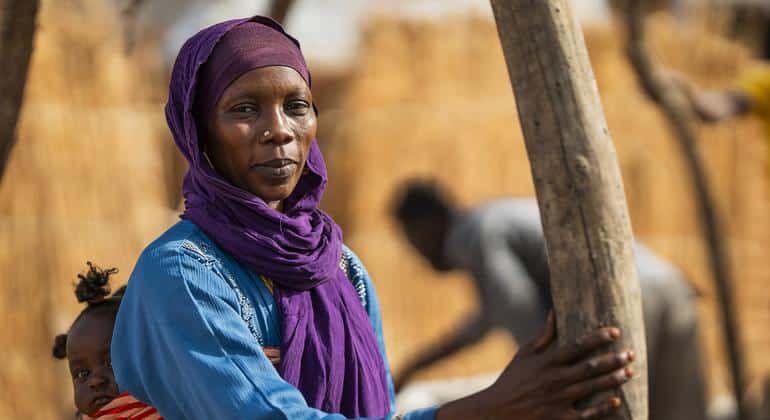Sure, here’s the translation into American English:
—
In the last decade, climate change-related natural disasters have forced approximately 250 million people to internally displace, equating to around 70,000 movements daily. This alarming phenomenon has been highlighted in a recent report by the United Nations High Commissioner for Refugees (UNHCR), which emphasizes the devastating impact of climate events like floods in South Sudan and Brazil, heatwaves in Kenya and Pakistan, and water scarcity in Chad and Ethiopia. These situations have increased the vulnerability of communities that are already facing serious hardships.
By mid-2025, there were 117 million people displaced due to war, violence, and persecution. However, the return of some refugees to Syria and Afghanistan has allowed for a decrease in the total number of displaced individuals compared to the previous year. Worryingly, 75% of these individuals reside in countries with a high risk of climate disasters, exacerbating their insecurity.
Filippo Grandi, the head of UNHCR, highlights that extreme climatic conditions disrupt access to basic services and destroy livelihoods. This reality forces people to flee once again after already suffering devastating losses. Droughts, floods, and heatwaves are particularly cruel to communities lacking the resources to recover.
The report also notes that support systems for refugees are on the brink of collapse. For instance, in Chad, newcomers from Sudan are receiving less than 10 liters of water a day, far below what is needed in emergency situations. If this trend continues, it is expected that by 2050, some refugee camps will face up to 200 days a year of extreme thermal stress, seriously jeopardizing the health and survival of their inhabitants.
Soil degradation in Africa, where 75% of the territory is in poor condition and more than half of refugee settlements are located in areas of high environmental stress, directly affects access to food, water, and income. This degradation fuels violence and instability, exacerbating the recruitment of armed groups in regions of the Sahel.
Despite the growing need for humanitarian support, a lack of funding and an inequitable climate financing system leave millions of at-risk people unprotected. Countries hosting refugees receive only a quarter of the climate financial aid they require. Grandi stresses that to sustain stability, it is crucial to invest in the most vulnerable communities and calls for the upcoming climate summit to produce concrete actions rather than mere promises.
The UNHCR report also indicates that by early 2025, 1.2 million refugees returned to their homes, although many did so in climate-vulnerable areas. Countries facing extreme climate threats are expected to increase from three to 65 by 2040. Since April 2023, nearly 1.3 million people have sought refuge in South Sudan and Chad, countries that are already among the least capable of coping with the escalating climate emergency.
—
Feel free to let me know if you need any adjustments!
Source: MiMub in Spanish











